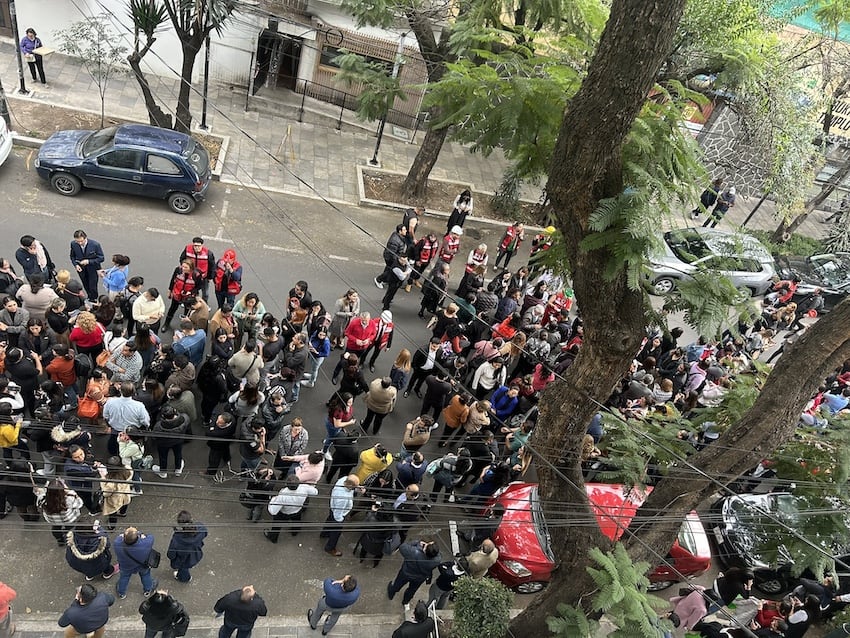Earthquake alarms sound in Mexico City after Puebla quake

A 5.7 magnitude earthquake with an epicenter in Puebla set off the earthquake alarm in Mexico City shortly after 2 p.m. Thursday.
The National Seismological Service (SSN) said on X that the quake struck at 2:03 p.m. and had its epicenter 16 kilometers west of Chiautla de Tapia, a town in the southwest of Puebla.
The SSN initially reported a slightly stronger 5.8 magnitude quake. No damage was immediately reported.
The earthquake alarm in Mexico City went off just a few seconds before the temblor, the El Financiero newspaper reported. Photos showed workers and other residents gathered on the streets of the capital.
Puebla Governor Sergio Salomón Cespedes said on X that authorities in close to 20 municipalities in Puebla reported feeling the quake.
“Until now, there is no report of damage,” he added.
Tronó la tierra: así se oyó en Morelos el estruendo por el #Temblor con epicentro en #Puebla#AlertaSismicapic.twitter.com/a6w7DV1WYe
— Milenio (@Milenio) December 7, 2023
A video taken in Morelos shows the Thursday afternoon quake.
President López Obrador published a video to social media in which he is speaking to national Civil Protection chief Laura Velázquez. She also said that no damage had been reported.
López Obrador also spoke with Cespedes, who reiterated that no damage or loss of human life had been reported in Puebla.
Earthquakes in Mexico more commonly have their epicenters near the Pacific coast.
However, the epicenter of the devastating Sept. 19, 2017 temblor was also in Puebla. That earthquake, which claimed close to 400 lives, had a magnitude of 7.1.
Mexico News Daily
Source: Mexico News Daily

